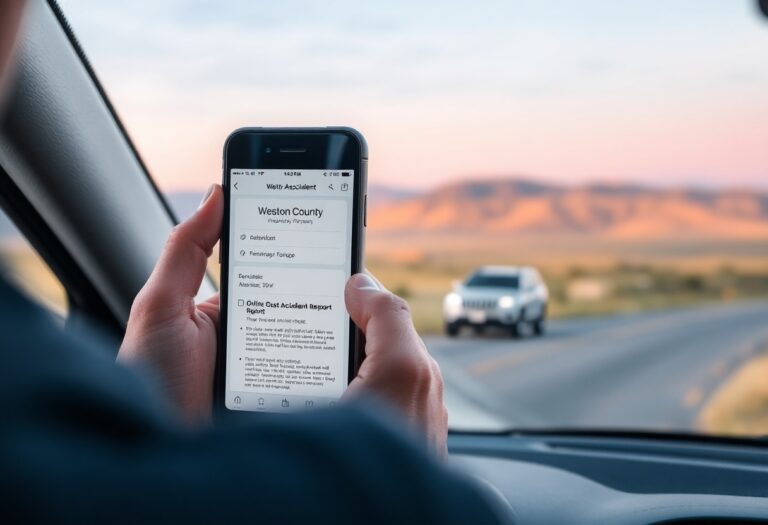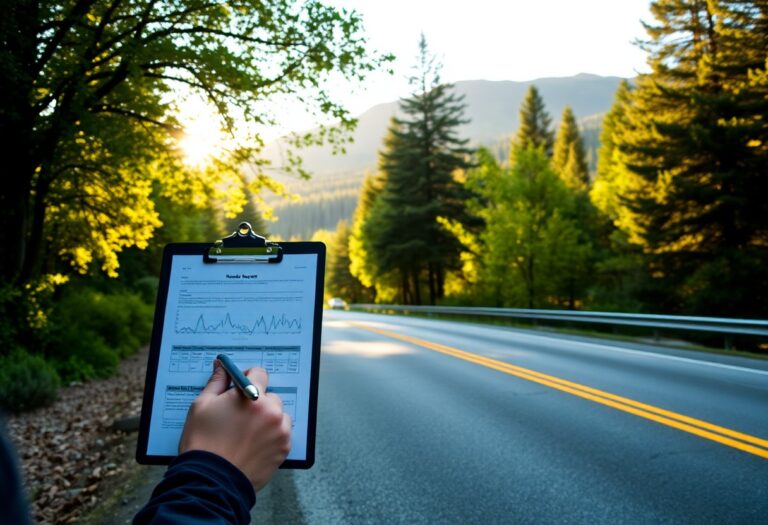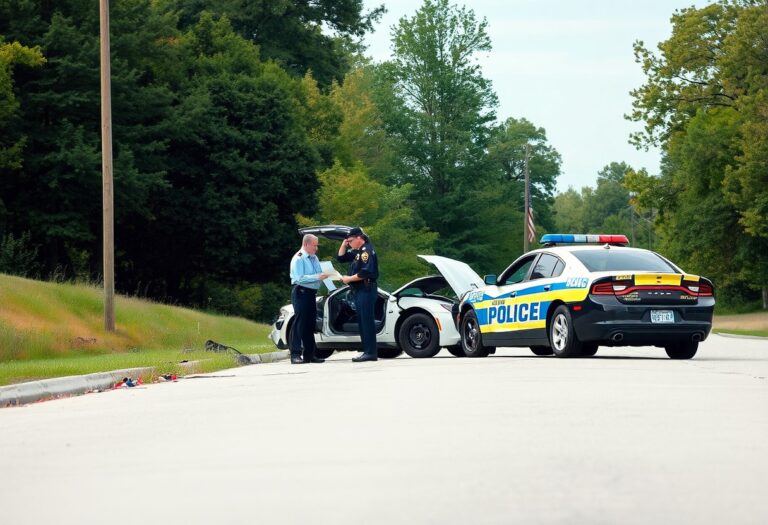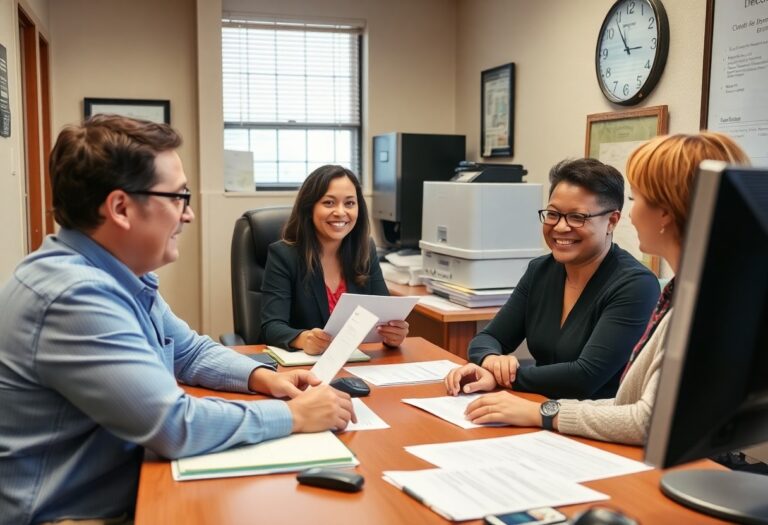Over time, having access to car accident reports can be vital for various reasons, including insurance claims, legal proceedings, or personal records. You may find navigating the process in Burleson County, Texas straightforward with the right guidance. In this blog post, we will walk you through the necessary steps and resources needed to obtain your accident report quickly and efficiently. Understanding your rights and how to access these reports will empower you during a challenging time and help ensure you’re adequately informed.
Navigating the Legal Maze: Understanding Car Accident Reporting in Burleson County
After an accident, you may find yourself wading through a complex web of legal requirements. Understanding the local processes is key to obtaining your car accident report efficiently. Texas law mandates that an accident report must be filed when there are injuries, fatalities, or damage exceeding $1,000, ensuring that all parties involved are documented adequately. Knowing these regulations helps you stay compliant while seeking the necessary information.
State Regulations Governing Accident Reports
In Texas, the Department of Public Safety stipulates that law enforcement must complete a Texas Peace Officer’s Crash Report (Form CR-3) for accidents that fit specific criteria. This report must be submitted within 10 days of the incident and contains necessary details such as the time, location, involved parties, and any injuries sustained. Obtaining a copy of this report is a vital step in resolving claims or pursuing legal action.
Local Procedures and Requirements
In Burleson County, your first step in accessing accident reports is to identify where the report was filed. Generally, this will be with the local law enforcement agency that responded to the accident scene. You will need to fill out a request form, and the processing fee for obtaining the report typically varies by agency.
Agency formats for requesting reports can differ—some may allow you to submit an online request, while others prefer in-person visits or phone calls. Be prepared to supply the date and location of the accident, as well as the involved parties’ names. Additionally, while reports are usually available within a few days of filing, retrieval times can vary during busy periods or if further investigation is needed. Knowing the local process and being proactive can greatly expedite your access to vital information after an accident.
The Process of Obtaining Your Report: Step-by-Step Guide
| Step | Description |
|---|---|
| 1 | Identify where the report is filed, typically with local law enforcement or designated accident report agencies. |
| 2 | Gather necessary details such as the date, location, and parties involved in the accident. |
| 3 | Decide whether to request the report electronically or in person, as explained below. |
| 4 | Fill out the application form for the report, providing accurate information to avoid delays. |
| 5 | Submit your request, ensuring to include any required fees for processing. |
| 6 | Receive the report and review it for accuracy, contacting the agency if any discrepancies exist. |
How to File a Request for Accident Reports
Filing a request for accident reports begins with gathering all relevant information regarding the incident. You will need to provide details such as the names of the involved parties, the date and location of the accident, and any report or case number if available. Typically, this request can be made online or through a printed form, which you can submit directly to the respective law enforcement agency handling the case.
Electronic vs. In-Person Requests: What You Need to Know
Your choice between an electronic or in-person request can impact the ease and speed of obtaining your report. Electronic requests can often be completed on the agency’s website and may allow instant verification of your submission, while in-person requests require travel to the police station or relevant office. Fees may differ depending on the method, with electronic methods sometimes offering lower processing charges.
The decision on how to request your accident report ultimately hinges on your convenience and availability. Filing electronically often saves you time; many agencies permit you to upload documents and pay fees online. However, in-person requests might allow for immediate clarification on any issues regarding your report. If you need assistance, speaking directly to an agency representative can be beneficial, enabling you to navigate any complexities in real-time.
Decoding the Information: What’s Inside Your Accident Report
Your accident report serves as a comprehensive document that encapsulates the details of the incident, including key facts that influence insurance claims and legal proceedings. It typically contains information about the involved parties, the accident’s time and location, the vehicles implicated, and the assessing officer’s observations. Understanding this document is crucial for any subsequent discussions with insurance companies or legal representation.
Key Components of the Report Explained
The report is structured with several vital components, including your personal details, witness statements, a diagram of the accident scene, and the police officer’s narrative. Each section plays a role in piecing together the circumstances surrounding the accident, which can significantly impact fault assessments and resultant claims.
Common Abbreviations and Terminology
Accident reports often feature abbreviations and specialized terms that may be unfamiliar. For instance, “N/A” indicates “not applicable,” while “BAP” could refer to “Bodily Injury to Another Person.” Familiarity with these terms can enhance your understanding of the report and help you communicate more effectively about your case.
In addition to the abbreviations noted earlier, terms like “FHP” (Failure to Hit and Run), “DOA” (Dead on Arrival), and “MVA” (Motor Vehicle Accident) commonly arise in reports and discussions among legal professionals. Being proficient with this language not only allows you to engage confidently in conversations around your accident but also ensures you’re well-equipped when dealing with insurance adjustments or legal counsel. This knowledge can be a significant asset when navigating your situation and pursuing any claims or litigations stemming from the incident.
Unpacking Your Options: How to Utilize Your Accident Report Effectively
After obtaining your accident report, leverage it to strengthen your case and enhance your recovery process. The report serves as a key document that outlines the facts of the accident, which can be used in discussions with your insurance company or any legal proceedings resulting from the collision. Familiarizing yourself with the information contained in the report, such as witness statements, police observations, and any relevant diagrams, helps you present a clearer, more compelling narrative about the incident.
For Insurance Claims: Maximizing Your Benefits
Providing your insurance company with a copy of the accident report can significantly impact the outcome of your claim. This document includes vital details that substantiate your version of events, which can expedite the claims process and help ensure you receive the full compensation you deserve. Ensure that you highlight specific factors in the report, such as any fault attributed to the other driver and corroborating witness statements, to reinforce your position.
Legal Implications: When to Consult an Attorney
If your accident resulted in significant damages, injuries, or disputes regarding fault, consulting an attorney is advisable. An experienced lawyer can analyze the accident report and guide you through complex legal implications. They will help you understand applicable laws and timelines, negotiate with insurance companies, and, if necessary, represent you in court to secure just compensation.
Consulting with an attorney can be a game changer if there’s a dispute about liability or if serious injuries occurred. For example, if the accident involved a commercial vehicle, specific regulations may come into play, complicating your claim further. An attorney’s expertise helps navigate these intricacies by formulating strong arguments based on the report. Having professional guidance ensures you don’t miss critical deadlines or details that could affect your rights and compensation.
The Role of Technology: Streamlining Access to Accident Reports
Technology has fundamentally transformed how you access car accident reports in Burleson County. With the implementation of digital systems, you can now secure your reports more quickly and efficiently than ever before. The shift towards online databases and automated record-keeping means you no longer need to visit multiple offices or wait in line, significantly reducing the time and effort involved in obtaining necessary documentation following an accident.
Online Portals and Resources: A Comprehensive Guide
Your first stop in accessing car accident reports should be official online portals provided by local law enforcement or government agencies. Websites often include user-friendly interfaces that allow you to easily search for your incident by entering key details like the date, location, and involved parties. Utilizing these resources saves you time and ensures you have access to the most accurate and up-to-date information when you need it.
Emerging Trends: The Future of Accident Reporting
As technology continues to advance, the future of car accident reporting is becoming even more efficient through innovations like mobile applications and real-time data sharing between agencies. With mobile platforms, you could easily file reports, track their status, and receive notifications without having to navigate multiple websites or offices.
Mobile applications are being developed to allow users to document their accidents promptly, uploading photos and information directly to reporting agencies. These apps can provide prompts for crucial details, ensuring you don’t miss critical elements of the case. Additionally, real-time data sharing between various police departments and insurance companies is on the rise, allowing for a streamlined reporting process that potentially speeds up claim settlements and improves overall accident response times.
Conclusion
So, accessing car accident reports in Burleson County, Texas, is straightforward when you know the right steps to follow. By utilizing online resources and local government departments, you can efficiently obtain the information you need. Whether for insurance purposes or personal records, having access to these reports can aid in your understanding and navigation of the aftermath of an accident. Stay informed and empowered as you handle any necessary documentation related to your situation.













